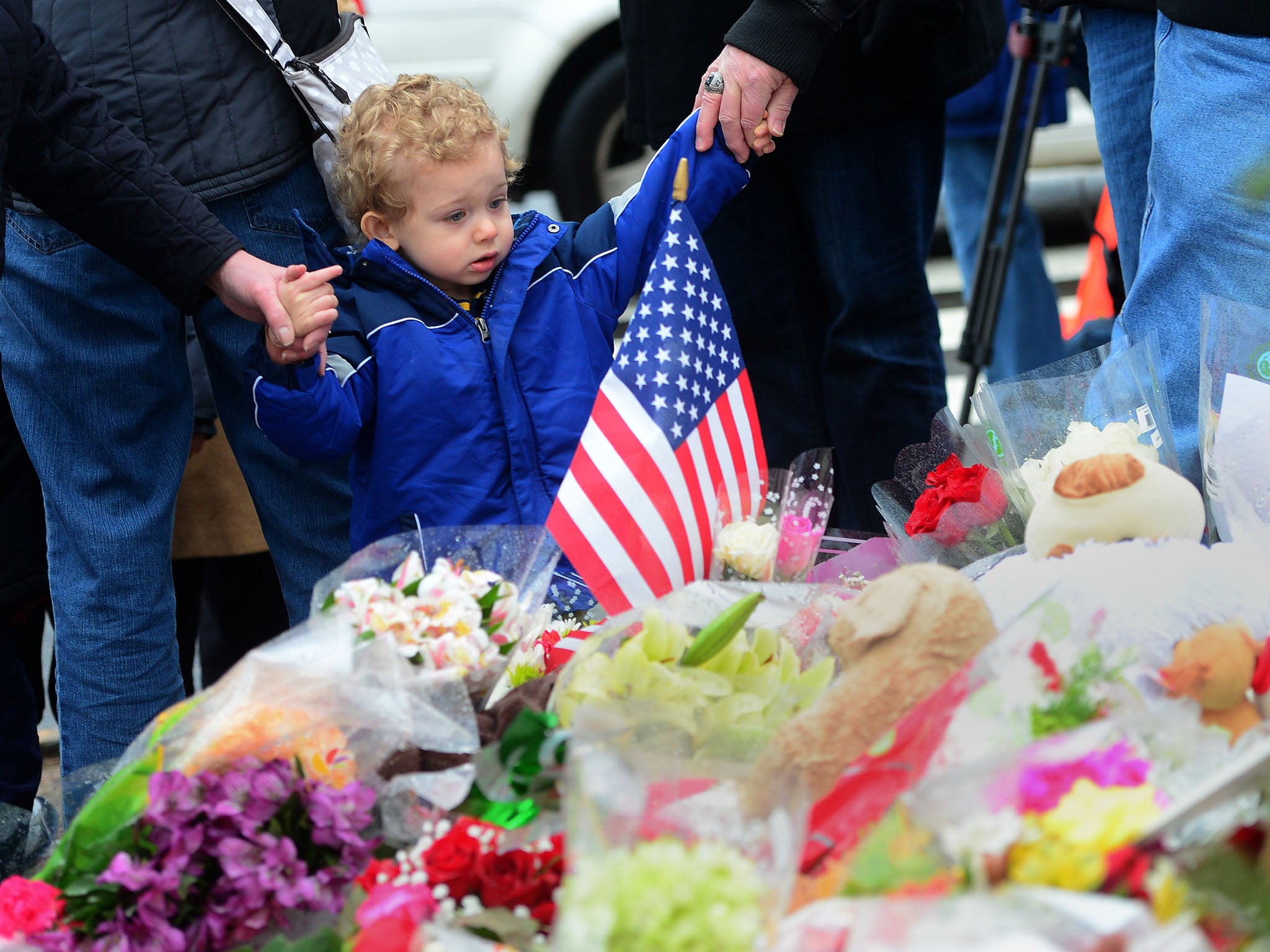Newtown massacre leads to security assessments nationwide

For Lisa Betts and her husband, the conversation started Friday at their Silver Spring, Maryland home, not long after they heard about the massacre that claimed the lives of 20 children and six staff members at a Connecticut school. How safe, they wondered, was the school their two children attend?
They ticked off its safety practices: Doors are locked. There's a buzzer system for visitors. Students practice emergency drills. Video cameras are installed.
"I think it's forced all of us to look at the realities of the world we live in," Betts, the mother of a kindergartner and fourth-grader, said of the rampage in Newtown, Conn.
Across the region and the nation, similar questions about safety have become more urgent as parents find themselves looking at their schools in new ways after one of the worst mass shootings in U.S. history.
As investigators continue to examine what motivated 20-year-old gunman Adam Lanza, safety experts agreed that school practices are uneven and that improvements may be needed in many districts.
Still, experts emphasized that preventing a tragedy like Newtown's is far more complex than installing locks or metal detectors.
"Turning our schools into fortresses is not going to solve the problem," said Dewey Cornell, a University of Virginia professor who studies school safety and cautions against solutions too specific to the Connecticut case.
Federal data show that the number of student homicides at schools has dropped.
President Barack Obama had discussions Monday with White House staff, the vice president and cabinet members, including Education Secretary Arne Duncan, to examine ways the country can respond to the tragedy, an individual with the administration said.
In communities far beyond Connecticut, school leaders sought to reassure parents and students, and police were posted outside many elementary schools.
At Armstrong Elementary School in Fairfax, Va., teacher Sharon Burns began circulating a petition asking for security doors on classrooms. In the District of Columbia, a parent of a student at Deal Middle School asked why her daughter had never participated in a lockdown drill.
Virginia Gov. Robert McDonnell called for a review of safety practices at all of the state's schools and a series of other initiatives to examine such issues as funding, threat assessments and emergency plans.
"I don't think we need to throw away the playbook on school safety, but we need to make sure best practices are being implemented," said Kenneth Trump, a school security consultant.
Trump said the deep concern that prevailed immediately after the 1999 massacre at Columbine High School has diminished. "The conversation and the training that we have today is not at the same level of consistency and intensity," he said.
Michael Dorn, executive director of Safe Havens International, a nonprofit that has developed safety plans for thousands of schools, said districts are likely to feel pressure to upgrade security, as they did after Columbine and later at Virginia Tech.
"There's a shift from concern to panic, if you will, and you have parents pushing to do something to improve safety," Dorn said.
Access to schools is a central issue, Dorn said, noting that less than 10 percent of schools around the country have strong access control, with locked entries, buzzers, protective laminated glass and camera or intercom systems.
"We have school districts that are incredibly good at this stuff, impressive and advanced," Dorn said. "One district has a gun safe with a tactical gun and a police officer there all day. Other districts are way behind."
Another big issue is training, many experts agreed.
Dorn said that schools should more regularly drill for emergencies and that all adults in schools should be taught how to respond to a range of events, such as a "gunman at the school, a woman upset with a knife, someone yelling and screaming who appears mentally ill, a kid having an asthma attack. The more you practice a variety of crisis situations, the more you can appropriately match responses more quickly."
Mental health issues are a prevailing concern. Cornell, of U-Va., said that the majority of shootings are preceded by threats that someone knew about and that "threat assessments" help bring attention — and help — to serious cases.
Jon Vernick, co-director of the Johns Hopkins Center for Gun Policy and Research in Baltimore, said some schools may need safety upgrades, but "placing the burden just on the schools is not fair."
Schools can only be as safe as their communities, Vernick said, adding that he believes a major part of community safety involves effective gun policies. "Sadly, our federal and state gun laws are very porous," he said, "and they don't do the things we need to do to keep guns out of the hands of high risk people."
Subscribe to Independent Premium to bookmark this article
Want to bookmark your favourite articles and stories to read or reference later? Start your Independent Premium subscription today.

Join our commenting forum
Join thought-provoking conversations, follow other Independent readers and see their replies